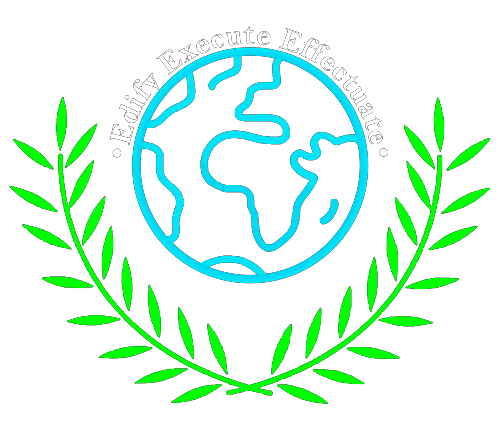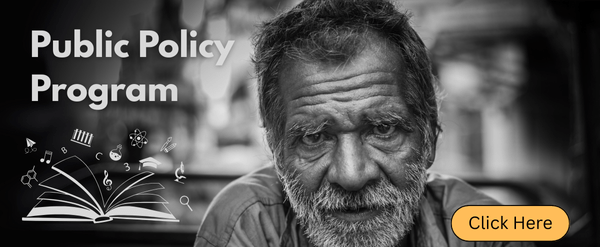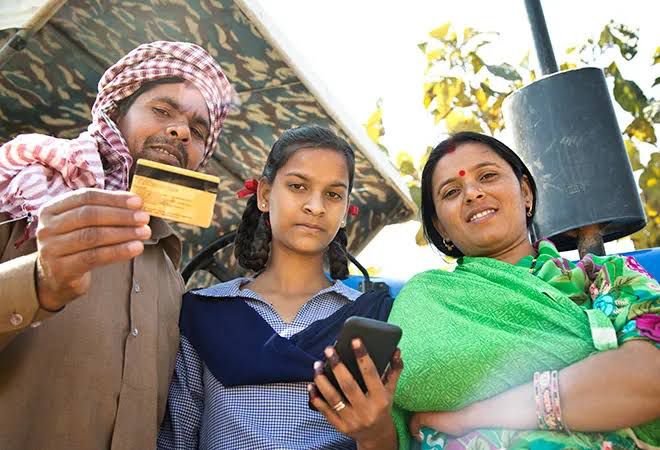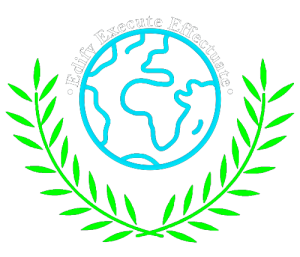Bridging the Financial Gap: How Financial Inclusion Drives Sustainable Development Goals (SDGs) through Advancing Zero Hunger, Good Health, and Gender Equality.
AUTHORS : MUSKAN GARG , AMRITA AVILIPSA , ACHINTYA CHAUHAN , ANUSHKA YADAV
INTRODUCTION
Financial inclusion is a powerful enabler of sustainable development, directly influencing multiple Sustainable Development Goals (SDGs) set by the United Nations. It refers to the accessibility and affordability of financial services, such as banking, credit, insurance, and digital payment systems, for individuals and businesses, especially those in underserved and marginalized communities. By fostering economic empowerment, financial inclusion helps reduce poverty, enhance food security (SDG 2), improve health and well-being (SDG 3), and promote gender equality (SDG 5). The integration of financial services into developmental strategies has been recognized as a key driver for economic resilience, social equity, and long-term prosperity.
SDG 2 aims to end hunger, achieve food security, and promote sustainable agriculture. Financial inclusion plays a crucial role in achieving these objectives by ensuring that farmers and agricultural enterprises have access to credit, savings, and insurance products. Access to microfinance and digital banking services enables smallholder farmers to invest in better seeds, fertilizers, and farming technologies, thereby increasing productivity and food security (FAO, 2020). Additionally, weather-based index insurance and agricultural loans help farmers mitigate risks associated with climate change and natural disasters, ensuring a stable food supply (Cole et al., 2013). Mobile banking and digital payment platforms, such as Kenya’s M-Pesa, have facilitated efficient transactions and access to financial resources, helping farmers improve their economic stability and food production capacity (Jack & Suri, 2014).
Achieving SDG 3, which focuses on ensuring healthy lives and promoting well-being for all, requires inclusive financial systems that support healthcare accessibility. Financial inclusion enables individuals to afford healthcare services through health insurance, microfinance loans for medical expenses, and digital payment systems for medical transactions (Lagarde & Palmer, 2011). Mobile health financing models, such as mobile money-based health savings accounts, have been instrumental in improving access to healthcare in low-income communities. For example, in Ghana, the Mobile Technology for Community Health (MoTeCH) initiative has allowed pregnant women to access timely maternal healthcare by integrating mobile banking with healthcare services.
Gender disparities in financial access remain a significant challenge, with women in many developing countries facing barriers to banking and credit services. SDG 5 seeks to achieve gender equality and empower all women and girls, and financial inclusion is a critical tool in realizing this goal. When women have access to financial resources, they gain greater autonomy, decision-making power, and opportunities for entrepreneurship (Dupas & Robinson, 2013). Microfinance institutions, such as the Grameen Bank in Bangladesh, have successfully provided small loans to women entrepreneurs, enabling them to invest in businesses, improve household income, and uplift their communities. Additionally, digital financial services, such as mobile banking, have facilitated women’s access to savings and credit, reducing gender gaps in financial participation (Global Findex Database, 2021).
Foundation of Financial Inclusion: Understanding Its Impact on SDGs
Financial inclusion and ending hunger (SGD2)
According to Antle and Diagana (2003), sustainable agricultural development is a key element in combating hunger and environmental deterioration. An inclusive financial system has recently been recognised as a mechanism that incentivises sustainable agricultural practices by reshaping the agricultural system into models with high specialisation, concentration, and economies of scale. Cai et al. (2021) found that increasing credit positively converts smallholder farming systems into larger-scale agricultural productions in China. Peng and Xu (2019) similarly found that financial inclusion and agricultural industrialisation mutually support each other, thereby suggesting that an inclusive financial system may aid the industrialisation of agricultural production. Ensuring that smallholding farmers have access to the financial resources that they require to modernise their agricultural production enables them to adopt innovative technologies in their line of work (Miller & Jones, 2010). As such, higher financial access may result in investments that facilitate better yields.
Financial inclusion, health, and well-being (SGD 3)
A part of human development, well-being is understood as a multifaceted phenomenon that can be assessed by a range of measurements based on subjective and objective criteria (Forgeard et al., 2011).There may be a positive correlation between financial inclusion, economic growth, and human development. Klapper et al. (2016) suggest that financial inclusion improves health by helping individuals overcome a health crisis while managing their medical expenses and not exhausting their savings. According to Zhuang et al. (2009), savings enable households to enhance their resilience to external shocks, smooth their consumption, build wealth, and invest in human capital development, such as schooling and medical care. A savings account enables parents to pay for their children’s admission to a clinic. Out-of-pocket health care cost is one of the main reasons why many individuals remain stuck in poverty.
Financial inclusion and gender equality (SGD 5)
Staveren (2001) posits that financially-based gender biases are the cause of gender inequality and further heighten poverty among women. In their study on sub-Saharan Africa, Ohiomu and Ogbeide-Osaretin (2019) concluded that financial inclusion substantially decreases gender inequality. Access to finance empowers women as it provides them with decision-making power, boosts their self-esteem, and improves their overall socioeconomic status (Cheston & Kuhn, 2002). However, Goetz and Gupta (1996) examined the special credit institutions in Bangladesh and contrarily reports that, although providing women with access to credit would empower them economically, financial inclusion does not significantly affect their economic empowerment as the financial resources of the household are largely controlled by their husbands. Nevertheless, providing women with greater access to financial services and resources will reshape traditional gender expectations as well as enable modern women to better integrate into modern society with more freedom.
Unlocking Potential: How Financial Inclusion Shapes Development
The Role of Financial Inclusion in Eradicating Hunger (SDG 2)
Financial services help small-scale farmers invest in better seeds, fertilizers, and equipment, improving productivity. Protects farmers from climate shocks and market volatility, ensuring food security.Reduces transaction costs and increases efficiency in food supply chains. Farmers can access fair prices through digital platforms and cooperatives. Migrants’ remittances can be channeled into agricultural development. Financial inclusion enables targeted government assistance, such as conditional cash transfers, improving nutrition for vulnerable populations. Women with financial access can invest in better food, education, and health for their families.
Financial Inclusion as a Catalyst for Better Health (SDG 3)
Financial inclusion enables low-income populations to access affordable health insurance, reducing out-of-pocket expenses and preventing catastrophic health expenditures. Micro-insurance schemes help vulnerable groups afford preventive care and medical treatments. Financial inclusion supports investments in rural clinics, hospitals, and telemedicine infrastructure, expanding healthcare access in underserved areas. Mobile money and digital wallets enable direct cash transfers for medical aid programs, reducing fraud and ensuring targeted healthcare spending.Conditional cash transfer (CCT) programs link financial aid to healthcare actions, such as child vaccinations, maternal care, and nutritional programs. Access to financial services enhances maternal and child health, as women can afford prenatal care, family planning, and emergency services.
Empowering Women Through Financial Inclusion (SDG 5)
Women often face barriers in obtaining loans due to a lack of collateral and financial history. Microfinance institutions (MFIs) and digital lending platforms provide women with credit for entrepreneurship, farming, and business expansion.Digital payroll systems ensure that women receive fair wages and timely payments, reducing wage theft and discrimination. Financial literacy programs help women start and scale businesses, leading to increased female participation in economic growth.When women have financial autonomy, they make better decisions about family health, children’s education, and nutrition, improving overall well-being. Financial independence allows women to escape abusive relationships by providing economic security and access to support networks.Women, especially in rural areas, face limited access to mobile phones and digital banking services. Expanding infrastructure and financial literacy programs can close this gap. Governments and financial institutions should design gender-sensitive financial products that cater to women’s unique economic needs.
Challenges and Strategies for Enhancing Financial Inclusion
Financial inclusion plays a critical role in advancing the United Nations Sustainable Development Goals (SDGs), particularly SDG 2 (Zero Hunger), SDG 3 (Good Health), and SDG 5 (Gender Equality). Despite its potential, several challenges hinder its effectiveness across these domains. For SDG 2, the primary obstacles include limited access to financial services in rural areas, lack of agricultural credit
and insurance, and widespread financial illiteracy. Smallholder farmers, who form the backbone of food production in many developing countries, often struggle to secure loans for better seeds, equipment, and climate-resilient practices due to the absence of formal banking infrastructure (Honohan, 2008; Allen et al., 2016). Additionally, the digital divide further compounds the issue, preventing farmers from leveraging mobile-based financial tools.
In the context of SDG 3 (Good Health), financial barriers to healthcare remain significant, especially in low-income regions. High out-of-pocket medical expenses push many households into poverty, as they rely heavily on personal
savings to cover healthcare costs (Cull et al., 2014). The lack of accessible and affordable health insurance, coupled with limited awareness about available financial tools, exacerbates this issue. Moreover, healthcare financing gaps persist due to the reluctance of financial institutions to offerloans for health-related purposes, citing high risks and insufficient collateral among lower-income populations (Suri & Jack, 2016).
SDG 5 (Gender Equality) faces unique challenges related to financial inclusion, including persistent gender disparities in access to financial services. Women, particularly in South Asia and Sub-Saharan Africa, encounter sociocultural barriers that limit their financial independence (Beck et al., 2007). Traditional norms, digital illiteracy, and safety concerns regarding mobile financial tools restrict women’s participation in the formal financial sector (Allen et al., 2016). As a result, women entrepreneurs often find it difficult to access credit and other essential financial resources, limiting their potential for economic growth and social empowerment
Addressing these challenges requires a multifaceted approach. For SDG 2, expanding digital financial services in rural areas through mobile banking infrastructure, as seen with M-Pesa in Africa, can significantly enhance farmers’ access to credit and insurance (Suri & Jack, 2016). Additionally, the development of tailored products such as weather-indexed insurance and low-interest microloans can empower farmers to make long-term investments in sustainable agricultural practices (Honohan, 2008). Financial literacy programs, especially those delivered through farmer cooperatives, can further enhance the effective utilisation of these services (Yunus, 2017).
In healthcare, the introduction of inclusive health insurance schemes is crucial for achieving SDG 3. Collaborative efforts between governments and financial institutions can help establish affordable micro-health insurance programs,
as exemplified by (Cull et al., 2014). Mobile-based health financing tools can simplify the process of saving for medical expenses while increasing accessibility to essential health services (Suri & Jack, 2016). Community awareness campaigns about health insurance benefits can further bridge the gap between available services and public participation (Allen et al.,2016).
For SDG 5, the creation of gender-specific financial products and services can significantly enhance women’s access to financial resources (Beck et al., 2007). Microfinance institutions like the Grameen Bank in Bangladesh have demonstrated the transformative impact of providing microloans to women entrepreneurs. Additionally, conducting digital literacy workshops and promoting financial education tailored to women’s needs can foster greater participation and financial autonomy.
Global Success Stories: Leveraging Financial Inclusion for Development
SDG 2: Zero Hunger
Case Study: Digital Financial Services and Agricultural Productivity in Sub-Saharan Africa
One of the biggest challenges in the agricultural sector, particularly in Sub-Saharan Africa, is the lack of access to formal financial services. Smallholder farmers, who constitute the majority of agricultural producers in the region, often struggle to secure credit for purchasing high-quality inputs such as seeds, fertilizers, and farming equipment. Without access to formal banking systems, these farmers remain trapped in a cycle of low productivity and poverty (Jack & Suri, 2016).
The introduction of mobile money platforms, such as Kenya’s M-Pesa, has significantly improved financial access for smallholder farmers. Through M-Pesa, farmers can receive payments promptly, save their earnings securely, and access microloans that help them invest in better agricultural inputs. Studies indicate that households using mobile money services like M-Pesa have experienced a reduction in poverty levels by up to 22% and an enhancement in their ability to manage financial risks (Jack & Suri, 2016). Additionally, agriculture-specific digital financial products, such as the M-Shwari savings and loan service, have allowed farmers to access credit without requiring collateral, further driving improvements in agricultural productivity (UNSGSA, 2021).
The impact of mobile-based financial services extends beyond individual farmers. Agricultural cooperatives and producer organizations have also leveraged mobile banking to facilitate bulk purchasing of inputs and collective sales, ensuring better market access and higher profit margins (AFI, 2021). These improvements contribute directly to SDG 2 by enhancing food security and reducing hunger through increased agricultural output.
SDG 3: Good Health and Well-being
Case Study: Mobile Money and Healthcare Access in East Africa
Access to quality healthcare services remains a significant challenge in many developing regions, where high out-of-pocket expenses and the absence of health insurance prevent individuals from seeking timely medical attention. Financial inclusion has played a crucial role in addressing these challenges by providing mobile money solutions for healthcare financing (Ahmed & Cowan, 2021).
In East Africa, mobile money services have enabled innovative health financing models such as M-TIBA in Kenya, a digital health wallet that allows individuals to save, receive, and spend money exclusively for medical expenses. M-TIBA has enhanced access to healthcare by enabling families to save for medical needs gradually, reducing the financial burden of unexpected health emergencies (Ahmed & Cowan, 2021).
A study on mobile money and healthcare utilization in Kenya found that individuals with access to mobile financial services were more likely to afford medical treatments, medications, and preventive care (Ahmed & Cowan, 2021). Additionally, mobile money services have facilitated peer-to-peer health financing, where family members can send money instantly to support relatives facing medical emergencies (UNSGSA, 2021).
Beyond individual benefits, financial inclusion has strengthened the healthcare ecosystem by enabling digital payments to healthcare providers, improving efficiency, and reducing corruption and fraud in the healthcare sector (AFI, 2021). As a result, financial inclusion has played a vital role in improving health outcomes and achieving SDG 3 by ensuring equitable access to medical services.
SDG 5: Gender Equality
Case Study: Digital Financial Inclusion Empowering Women in Bangladesh
Gender disparities in financial access remain a major barrier to economic empowerment for women, particularly in developing countries where traditional societal norms restrict their financial independence. Financial inclusion has proven to be a transformative tool for gender equality by providing women with autonomous financial access, enabling them to save, invest, and participate in economic activities (AFI, 2021).
In Bangladesh, mobile banking services such as bKash have successfully increased financial inclusion among women. The platform offers digital banking solutions that allow women, especially those in rural areas, to conduct transactions without the need for a physical bank branch. A study by the Alliance for Financial Inclusion (AFI, 2021) found that women using digital financial services were more likely to engage in entrepreneurship and small business ventures, leading to improved household income and financial stability.
Financial inclusion has also contributed to greater economic decision-making power for women. With their own financial resources, women have been able to invest in education, healthcare, and nutrition for their families, breaking cycles of poverty and dependency (UNSGSA, 2021). Additionally, microfinance programs targeting female entrepreneurs have provided small loans without requiring collateral, allowing women to start or expand businesses in sectors such as textiles, agriculture, and handicrafts (Ahmed & Cowan, 2021).
Beyond economic empowerment, financial inclusion has played a key role in addressing gender-based violence and social inequalities. Access to financial resources has enabled women to escape abusive relationships, secure independent housing, and provide for their children without relying on male guardians (UNSGSA, 2021). As a result, digital financial inclusion is not only a driver of gender equality but also a catalyst for broader social transformation.
Conclusion: The Road Ahead for Financial Inclusion and Sustainable Development
Financial inclusion is undeniably a cornerstone of sustainable development, significantly contributing to key global objectives such as Zero Hunger (SDG 2), Good Health and Well-being (SDG 3), and Gender Equality (SDG 5). By integrating financial services into agriculture, small-scale farmers can increase productivity, enhance food security, and build resilience against climate shocks (FAO, 2020). Similarly, expanding access to financial tools like micro-insurance and digital banking enables low-income populations to afford healthcare services, reducing the financial burden of medical expenses and improving overall health outcomes (Cull et al., 2014; Suri & Jack, 2016).
Moreover, financial empowerment plays a pivotal role in bridging gender disparities, allowing women to engage in entrepreneurship, secure fair wages, and gain economic independence (Beck et al., 2007; Global Findex Database, 2021). Despite persistent barriers, initiatives such as mobile banking, microfinance institutions, and gender-sensitive financial policies have demonstrated remarkable progress in fostering financial inclusivity and economic equality.
To ensure the continued success of financial inclusion, policymakers, financial institutions, and international organizations must collaborate to expand digital financial services, improve financial literacy, and create tailored financial products for marginalized communities. By addressing existing challenges and capitalizing on innovative financial solutions, global efforts can drive lasting socioeconomic development and help achieve the Sustainable Development Goals.
As demonstrated by case studies from Sub-Saharan Africa, East Africa, and Bangladesh, financial inclusion is not merely an economic tool but a transformative force that uplifts communities, reduces poverty, and fosters long-term prosperity (Jack & Suri, 2016; Ahmed & Cowan, 2021). The future of sustainable development lies in ensuring that financial systems are accessible, inclusive, and equitable for all.
References
- Demirgüç-Kunt, A., Klapper, L., Singer, D., Ansar, S., & Hess, J. (2018). The Global Findex Database 2017: Measuring financial inclusion and the fintech revolution. The World Bank. https://documents.worldbank.org/en/publication/documents-reports/documentdetail/332881525873182837/the-global-findex-database-2017-measuring-financial-inclusion-and-the-fintech-revolution
- Dupas, P., & Robinson, J. (2013). Why don’t the poor save more? Evidence from health savings experiments. American Economic Review, 103(4), 1138–1171.
- Food and Agriculture Organization. (2020). The State of Food Security and Nutrition in the World 2020: Transforming food systems for affordable healthy diets. https://openknowledge.fao.org/server/api/core/bitstreams/9a0fca06-5c5b-4bd5-89eb-5dbec0f27274/content
- Global Findex Database. (2021). The Global Findex Database 2021: Financial inclusion, digital payments, and resilience in the age of COVID-19. The World Bank. https://globalfindex.worldbank.org/
- Jack, W., & Suri, T. (2014). Risk sharing and transactions costs: Evidence from Kenya’s mobile money revolution. American Economic Review, 104(1), 183–223. https://www.aeaweb.org/articles?id=10.1257/aer.104.1.183
- Lagarde, M., & Palmer, N. (2011). The impact of health financing strategies on access to health services in low and middle-income countries. Cochrane Database of Systematic Reviews, 2011(4), CD006413. https://www.cochranelibrary.com/cdsr/doi/10.1002/14651858.CD006413.pub2/full
- Sserwanja, Q., Musaba, M. W., & Mutisya, L. M. (2021). Financial inclusion and maternal healthcare utilization among women in sub-Saharan Africa: Evidence from demographic and health surveys. BMC Pregnancy and Childbirth, 21(1), 1–11. https://bmcpublichealth.biomedcentral.com/articles/10.1186/s12889-021-10706-4
- Yunus, M. (2007). Creating a world without poverty: Social business and the future of capitalism. PublicAffairs.
- Ahmed, H., & Cowan, B. (2021). Mobile money and healthcare use: Evidence from East Africa. World Development, 141. Retrieved from https://econpapers.repec.org/article/eeewdevel/v_3a141_3ay_3a2021_3ai_3ac_3as0305750x21000048.htm
- Alliance for Financial Inclusion (AFI). (2021). Case studies of multisectoral approaches to integrating digital financial services for women’s financial inclusion. Retrieved from https://www.afi-global.org/wp-content/uploads/2021/10/DWFS_Gender_CS_FINAL.pdf
- Jack, W., & Suri, T. (2016). The long-run poverty and gender impacts of mobile money. Science, 354(6317), 1288-1292. Retrieved from https://science.sciencemag.org/content/354/6317/1288
- United Nations Secretary-General’s Special Advocate for Inclusive Finance for Development (UNSGSA). (2021). Igniting SDG progress through digital financial inclusion. Retrieved from https://www.unsgsa.org/sites/default/files/resources-files/2023-02/Igniting%20SDG%20Progress%20through%20Digital%20Financial%20Inclusion.pdf
- Antle, J. M., & Diagana, B. (2003). Creating incentives for the adoption of sustainable agricul-tural practices in developing countries: The role of soil carbon sequestration. American Journal of Agricultural Economics, 85(5), 1178–1184.https://onlinelibrary.wiley.com/doi/10.1111/j.0092-5853.2003.00526.x
- Cai, B., Shi, F., Huang, Y., & Abatechanie, M. (2021). The impact of agricultural socialized services to promote the farmland scale management behaviour of smallholder farmers: Empirical evidence from the rice-growing region of Southern China. Sustainability, 14(1), 316. https://doi.org/10.3390/su14010316
- Miller, C., & Jones, L. (2010). Agricultural value chain finance: Tools and lessons. Practical Action Publishing.
- Forgeard, M. J. C., Jayawickreme, E., Kern, M. L., & Seligman, M. E. P. (2011). Doing the right thing: Measuring wellbeing for public policy. International Journal of Wellbeing, 1(1), 79–106. https://doi.org/10.5502/ijw.v1i1.15
- Klapper, L., El-Zoghbi, M., & Hess, J. (2016). Achieving the sustainable development goals: The role of financial inclusion. CGAP
- Zhang, Q., & Posso, A. (2017). Microfinance and gender inequality: Cross-country evidence. Applied Economics Letters, 24(20), 1494–1498. https://doi.org/10.1080/13504851.2017.1287851
- Zhuang, J., Gunatilake, H. M., Niimi, Y., Khan, M. E., Jiang, Y., Hasan, R., & Huang, B. (2009). Financial sector development, economic growth, and poverty reduction: A literature review. Asian Development Bank Economics Working Paper Series (173)
- Staveren, I. V. (2001). Gender biases in finance. Gender & Development, 9(1), 9–17. https://doi.org/10.1080/13552070127734
- Ohiomu, S., & Ogbeide-Osaretin, E. N. (2019). Financial inclusion and gender inequality reduction: Evidence from sub-Saharan Africa. The Indian Economic Journal, 67(3-4), 367–372. https://doi.org/10.1177/0019466220946411
- Cole, S., Giné, X., & Vickery, J. I. (2013). How does risk management influence production decisions? Evidence from a field experiment. The Review of Financial Studies, 26(10), 2821–2859.
- Cheston, S., & Kuhn, L. (2002). Empowering women through microfinance. Draft, Opportunity International, 64, 1–64.
- Goetz, A. M., & Gupta, R. S. (1996). Who takes the credit? Gender, power, and control over loan use in rural credit programs in Bangladesh. World Development, 24(1), 45–63. https://doi.org/10.1016/0305-750X(95)00124-U





